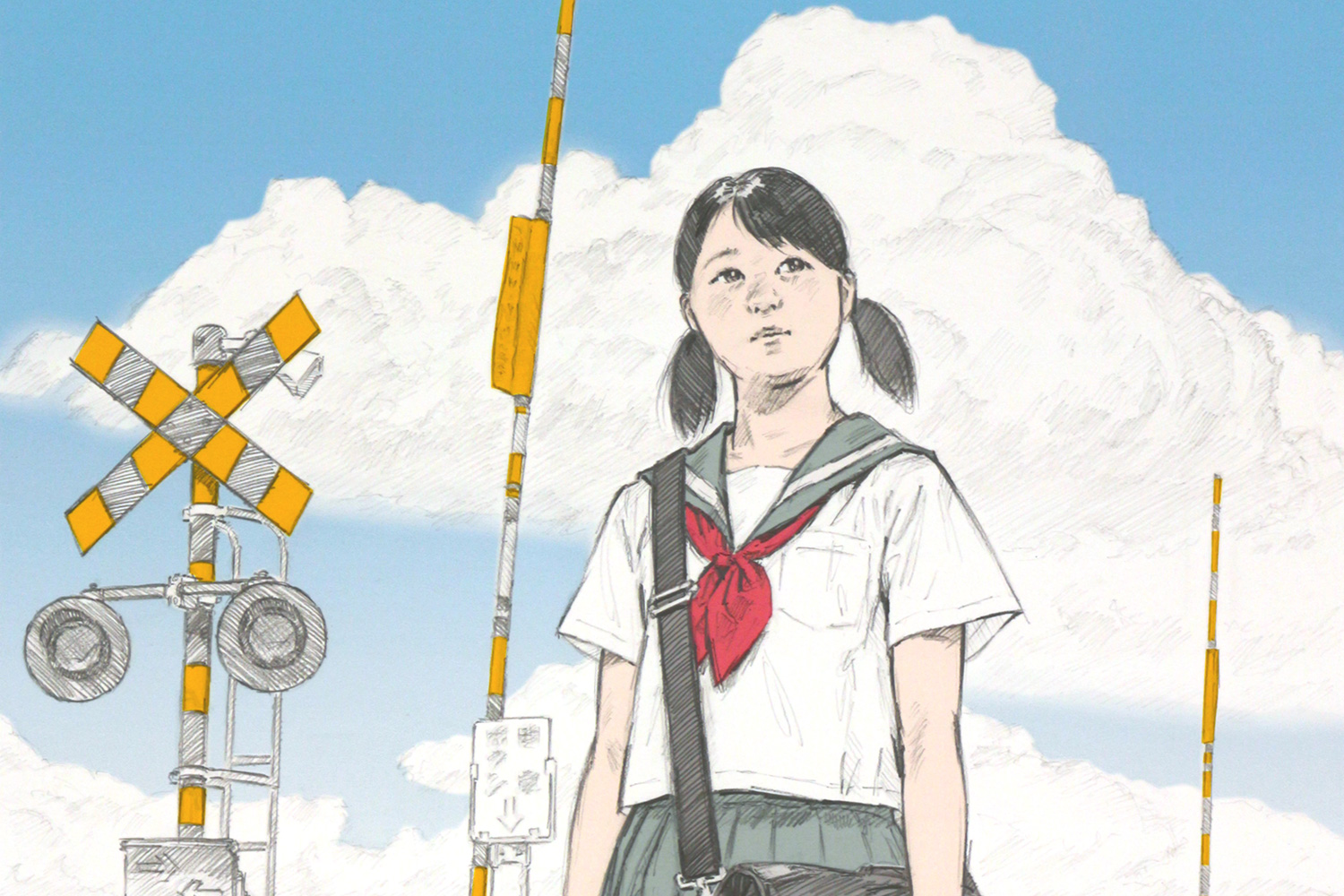夏の記憶(踏切のある風景)

踏切はありふれた風景の一部ですが、周囲の街の景観が歳月と共に変わっても、その場所だけは昔から変わらない情景を留めているように思えます。
そして踏切は、ある種のメタファー(直喩)として、例えば映像表現の中でも見い出すことができます。
古い映画では1972年の「あゝ声なき友」の中で、主人公が最後に本音を吐露したのは、踏切の遮断機に足を止めていた時でした。
あるいは、2006年の「時をかける少女」では、踏切が最初のタイムリープ(時間跳躍)の契機となっていました。
歩み続けていた道程に一度立ち止まり、再び自ら一歩を踏み出すという象徴的なトポス(場所)として、踏切のある風景は心のどこかに記憶されているのかもしれません。
(補遺)
モデルさんが着用している学生服は実在の学校とは関係がなく、表現される世界観のイメージを補完する演出の一部です。
(追記 2025/5)
先日、縁あって40数年ぶりに「あゝ声なき友」を観ましたが、白黒映画とばかりに思っていたらカラー映画で、主人公が本音を吐露したのは、最後の踏切のシーンの直前に飲んでいた居酒屋でした。
なんとも記憶が曖昧でしたが、あらためて鑑賞すると最後のシーンで、踏切を横切る長い列車の間から見え隠れする主人公の顔が、この映画の伝えたいすべてのことを物語っているようでした。
また併せて、「父子草」(1967年)も初めて観る機会を得ましたが、踏切の警報音が効果的に使われていました。
高架橋がほとんどない時代には、踏切は今以上に街なかの日常風景に溶け込んでいたことが伺えます。
Summer memory (scenery with a railroad crossing)
Railroad crossings are a common part of the landscape, but even though the landscape of the surrounding city has changed over the years, it seems that the place remains unchanged from the past.
A railroad crossing can also be found as a kind of metaphor (simile), for example, in visual expressions.
In the old movie “Ah, the Voiceless Friend” (1972), the last time the main character reveals his true feelings is when he is stopped at a railroad crossing gate.
Or, in 2006’s The Girl Who Leapt Through Time, a railroad crossing was the trigger for the first time leap.
The sight of a railroad crossing may be remembered somewhere in our hearts as a symbolic topos (place) where we stop and take another step forward on our journey.
(Supplement)
The school uniforms worn by the models are not related to the actual school, but are part of the production that complements the image of the worldview being expressed.
(Addendum/2025/5)
The other day, I had the opportunity to watch “Ah, Silent Friend” for the first time in over 40 years. I had thought it was a black and white film, but it was actually in color, and the main character reveals his true feelings while drinking at an izakaya just before the final railroad crossing scene.
My memory of it was quite vague, but when I watched it again, the final scene, in which the protagonist’s face peeks out between the long train crossing the railroad crossing, seemed to tell me everything the film was trying to convey.
I also had the chance to watch “Chichikoguza” (1967) for the first time, and the railroad crossing warning sound was used effectively.
In the days when there were hardly any elevated bridges, railroad crossings were a much more integral part of everyday cityscapes than they are today.
Souvenir d’été (paysage avec un passage à niveau)
Les passages à niveau font partie intégrante du paysage, mais même si le paysage de la ville environnante a changé au fil des années, il semble que l’endroit reste inchangé par rapport au passé.
Un passage à niveau peut également être trouvé comme une sorte de métaphore (similaire), par exemple dans les expressions visuelles.
Dans le vieux film « Ah, l’ami sans voix » (1972), la dernière fois que le personnage principal révèle ses véritables sentiments, c’est lorsqu’il est arrêté à la porte d’un passage à niveau.
Ou encore, dans La Fille qui a traversé le temps en 2006, un passage à niveau a été le déclencheur du premier saut.
La vue d’un passage à niveau peut rester quelque part dans notre cœur comme un topos (lieu) symbolique où nous nous arrêtons et faisons un pas de plus dans notre voyage.
(Supplément)
Les uniformes scolaires portés par les modèles ne sont pas liés à l’école elle-même, mais font partie de la production qui complète l’image de la vision du monde exprimée.
(Ajouté en 2025/5)
L’autre jour, j’ai eu l’occasion de regarder « Ah, Silent Friend » pour la première fois depuis plus de 40 ans. Je pensais que c’était un film en noir et blanc, mais il était en fait en couleur, et le personnage principal révèle ses vrais sentiments en buvant dans un izakaya juste avant la scène finale du passage à niveau.
Mon souvenir était assez vague, mais lorsque je l’ai revu, la scène finale, dans laquelle le visage du protagoniste apparaît entre le long train traversant le passage à niveau, semblait me dire tout ce que le film essayait de transmettre.
J’ai également eu l’occasion de voir pour la première fois « Chichikoguza » (1967), dans lequel le son d’avertissement du passage à niveau était utilisé efficacement.
À l’époque où il n’y avait pratiquement pas de ponts surélevés, les passages à niveau faisaient partie intégrante du paysage urbain quotidien bien plus qu’aujourd’hui.

